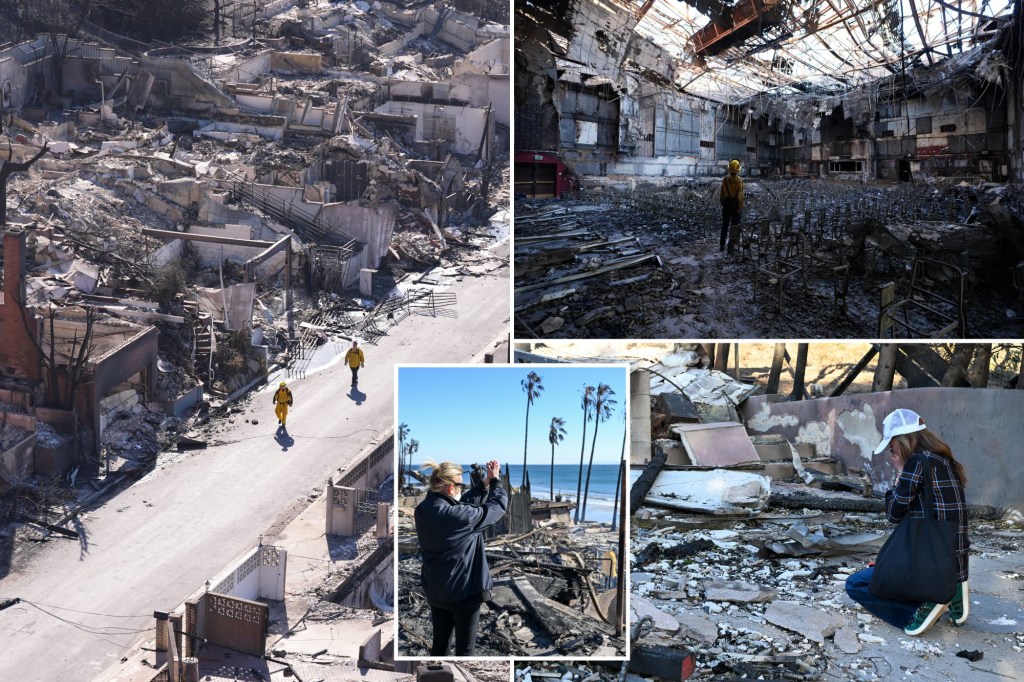The Woolsey Fire, a devastating wildfire that raged through Southern California in November 2018, left an indelible scar on the landscape and the lives of Malibu residents. As evacuation orders lifted and residents returned to their properties, they were met with scenes of unimaginable destruction. Homes that once stood as symbols of prosperity and coastal living were reduced to charred rubble and ash. The once-vibrant hillsides, covered in lush vegetation, were transformed into a desolate, blackened wasteland. The air, thick with the lingering smell of smoke, served as a constant reminder of the inferno that had swept through their community. The emotional toll was immense, as residents grappled with the loss of their homes, cherished possessions, and the sense of security they once held dear. The arduous process of rebuilding their lives from the ashes had just begun, a journey fraught with uncertainty and emotional challenges.
The impact of the Woolsey Fire extended beyond Malibu, reaching into other affluent Los Angeles neighborhoods, including Altadena and the Pacific Palisades. These communities, known for their picturesque landscapes and luxurious homes, were not spared the wrath of the flames. Homes perched on hillsides, once offering breathtaking views, became vulnerable targets for the rapidly spreading fire. As the fire raged, residents were forced to flee their homes with little more than the clothes on their backs, leaving behind a lifetime of memories and possessions. The scale of destruction across these communities painted a grim picture of the fire’s indiscriminate power, leaving thousands displaced and homeless, facing an uncertain future.
The immediate aftermath of the Woolsey Fire brought a wave of challenges for displaced residents. Finding temporary housing became a pressing concern, with shelters overflowing and hotel rooms scarce. Many were forced to rely on the kindness of friends, family, or charitable organizations for a place to stay. The logistical hurdles of navigating insurance claims, accessing vital documents, and securing financial assistance added to the already overwhelming burden. The loss of irreplaceable personal belongings, such as family photos and heirlooms, further compounded the emotional trauma experienced by those affected. The sense of community, however, became a source of strength and resilience as neighbors rallied to support one another, offering assistance, comfort, and a shared sense of hope amidst the devastation.
Beyond the immediate impact on housing and personal belongings, the Woolsey Fire also disrupted the social fabric of these communities. Schools were closed, businesses were shuttered, and community events were canceled, creating a sense of displacement and uncertainty. The loss of familiar routines and social connections further exacerbated the emotional distress experienced by residents. The economic impact of the fire was also significant, as businesses struggled to recover from losses and residents faced the daunting task of rebuilding their homes and lives. The long-term effects of the fire on the local economy and the social well-being of the community remained a significant concern.
The recovery process in the aftermath of the Woolsey Fire was a long and complex undertaking, requiring a multifaceted approach. The immediate priority was to provide essential services to displaced residents, including food, shelter, medical care, and emotional support. Government agencies, non-profit organizations, and community groups mobilized to address these immediate needs, providing temporary housing, distributing essential supplies, and offering counseling services. The next phase involved assessing the damage and developing long-term recovery plans. This included rebuilding infrastructure, restoring damaged ecosystems, and providing financial assistance to homeowners and businesses to rebuild. The recovery process required collaboration between government agencies, private organizations, and the affected communities to ensure a coordinated and effective response.
The Woolsey Fire served as a stark reminder of the increasing threat of wildfires in California and the need for proactive measures to mitigate future disasters. The combination of drought conditions, dry vegetation, and strong winds created a perfect storm for the rapid spread of the fire. Experts emphasized the importance of implementing fire prevention strategies, such as creating defensible spaces around homes, managing vegetation, and improving early warning systems. The fire also highlighted the importance of community preparedness and the need for residents to have evacuation plans in place. The lessons learned from the Woolsey Fire served as a catalyst for a renewed focus on wildfire prevention and mitigation efforts, aiming to protect communities and prevent future tragedies of this magnitude. The long-term goal was to build more resilient communities that are better prepared to withstand the growing threat of wildfires in a changing climate.

